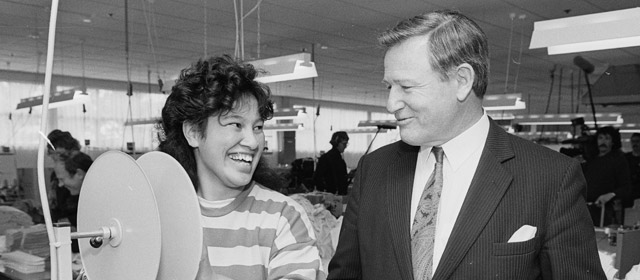Story summary
Colonial times
New Zealand’s early government wanted to encourage industry and build a productive society. The government developed infrastructure, including ports, railways, roads, telegraph and postal facilities, and electricity. The government encouraged manufacturers to produce specific goods, including paper, sugar and sulfuric acid, by offering bonuses.
To help local factories compete with imported products, the government introduced tariffs (taxes on imports).
Encouraging manufacturing
In the 1930s economic depression, prices for New Zealand agricultural goods fell. The government realised the need for a more balanced economy, with industry as well as farming. Manufacturers were encouraged to produce goods that would otherwise be imported, and imports were limited through licensing, leading to a manufacturing boom.
The government also did scientific and industrial research, and provided information to manufacturers. During and after the Second World War there was a labour shortage, so the government set up immigration programmes, and encouraged married women to work outside the home.
Supporting exports
In the 1960s and 1970s the government supported major projects with export potential, including an aluminium smelter, a steel mill and an oil refinery. Britain’s plans to join the European Economic Community threatened New Zealand’s economy, which had long relied on selling agricultural goods in the British market. The government set up trade missions, agencies and programmes to help manufacturers and encourage exporting. But few manufacturers exported goods.
The end of intervention
The Labour government elected in 1984 was committed to ending government support for industry. New Zealand’s controlled economy became a market-led economy. The government continued phasing out import licensing, and a programme of tariff reduction began. Many government business activities were sold.
The 2000s
In the 2000s the Labour government increased spending on research, set up business incubators and introduced a tax credit for businesses doing research. New Zealand Trade and Enterprise was set up in 2003 to assist industry and help exporters. The National-led government elected in 2008 worked to reduce regulation and continued to support exporters.





